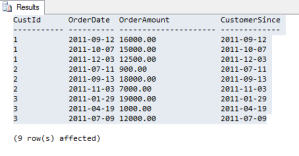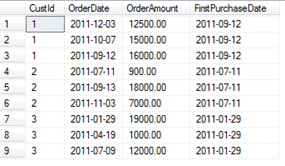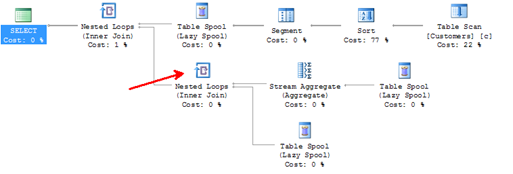I started a two part series on linking to the previous rows. In the first part, I’ve showed how to calculate running totals using T-SQL. In this post i will discuss another problem which also requires linking to previous row fron the result set. Calculating change from the previous row.
Test Data:
I use the same sample data that was used for part 1 of this post. It has Yr and SaleAmount for each year.
How to calculate change from previous row?
Suppose you want to calculate the change of SaleAmount from current year to the previous year.
Using CTE
; WITH cteChangefromPrevious
AS
(
SELECT
Yr
, SaleAmount
, ROW_NUMBER() OVER(ORDER BY Yr) Row_Num
FROM
#YrSales
)
SELECT
Cur.Yr
, Cur.SaleAmount
, Cur.SaleAmount - Prev.SaleAmount
FROM
cteChangefromPrevious Cur
LEFT OUTER JOIN
cteChangefromPrevious Prev
ON Cur.Row_Num = Prev.Row_Num + 1
Row_Number function inside the CTE assigns unique row numbers to each year as a new column (Row_Num).
In the outer select query I join the CTE to itself using a left outer join is joining CTE with itself. Join condition current row = (previous row + 1) causes the query to return SaleAmount for previous year. Minus operation between the previous row and current row retrieves the differnece between two values.
Conclusion
You’ve seen three approaches to this problem, linking to previous rows. Correlated sub query, cross join, and CTE. Using sub query is the popularly used method. But it is worth it try the other methods also.
~Sam.







